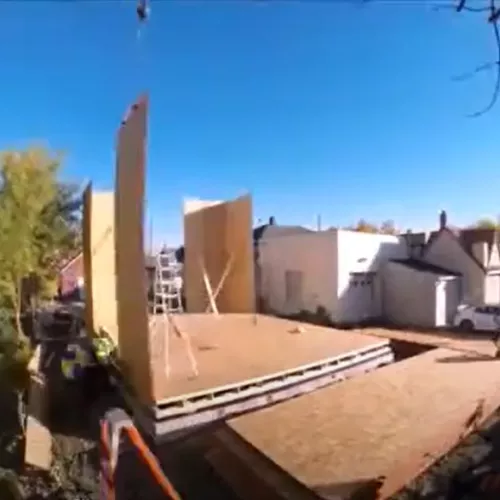When people think of net-zero homes, many start thinking of solar panels and battery storage. We spoke with Patrick Huelman an associate professor and Cold Climate Housing program coordinator at the University of Minnesota, who makes the case for something more foundational (pun intended).
You talk about CEI a lot. What is CEI?
Continuous Exterior Insulation (CEI) is a fundamental part of successfully executing a “perfect wall.” It simply means that a layer(s) of thermal insulation is placed in a thoughtful and continuous manner to the outside of the structural components of the home. In typical stud-frame construction this means a continuous layer of insulation material — usually a semi rigid board material — is placed between the framing and final exterior cladding or finish. This reduces thermal bridging at the framing members, but more importantly it warms up the sheathing.
So what is the "perfect wall"?
The perfect wall is a conceptual idea and furthermore, does not mean the wall is flawless. However, it is an approach to a wall assembly that is highly efficient, remarkably durable and resilient. In a nutshell, it is a wall where the four control layers — water, air, thermal and vapor — are placed to the exterior of the building structure. It also includes a cladding or finishing system that will drain and dry. This means that a) the building’s structure is always warm and dry, b) the integrity of control layers is easier to maintain, c) the moisture loading from the cladding is limited, and d) interior components can dry inward and external components can dry outward. Finally, this approach is not only for walls. The same approach works for roofs, foundations and floor systems, too.
Solid Panel “Perfect Wall” Building and Delivery System
Watch a time lapse video of the complete panel installation, courtesy of the University of Minnesota Department of Bioproducts and Biosystems Engineering.
Beyond high energy efficiency, It seems like this has a big impact on moisture management.
Absolutely! Building a highly energy efficient wall is very simple, just add more insulation and make it airtight. Building a highly robust and durable wall is not as so simple. Moisture management is key. To ensure durability, both liquid water and water vapor transport mechanisms must be controlled. But to ensure robustness and resilience there must be an intentional drying potential so if a moisture-susceptible material gets wet it will have an opportunity to dry out safely. Once again this is where the external CEI plays an important role.
Are the building materials needed for this kind of construction hard to find?
Barring some of the current supply issues in the market right now, these are readily available materials. But it generally requires a change in design and construction practices. For instance, window installation and trim issues may be different when using a CEI. Also some materials may need to come from different suppliers or vendors.
Any final messages you would give someone interested in building a net-zero energy home?
Net Zero Energy (NZE) homes are going to require new building enclosure strategies and systems to ensure robust, durable and resilient performance. And these new building enclosures will require new mechanical strategies and systems to ensure an efficient, comfortable and healthy indoor environment.
Energy Efficiency Tips for Your Home
To see Patrick present on this subject, as well as other great presenters, consider registering for and attending the 2022 Energy Design Conference in Duluth!
We encourage reuse and republishing of this article. All Clean Energy Resource Teams news posts are made available under the Creative Commons Attribution license, meaning you can share and adapt the work as long as you give us credit. We'd also love it if you link back to the original piece. Have questions or want to chat? Drop us a line.



